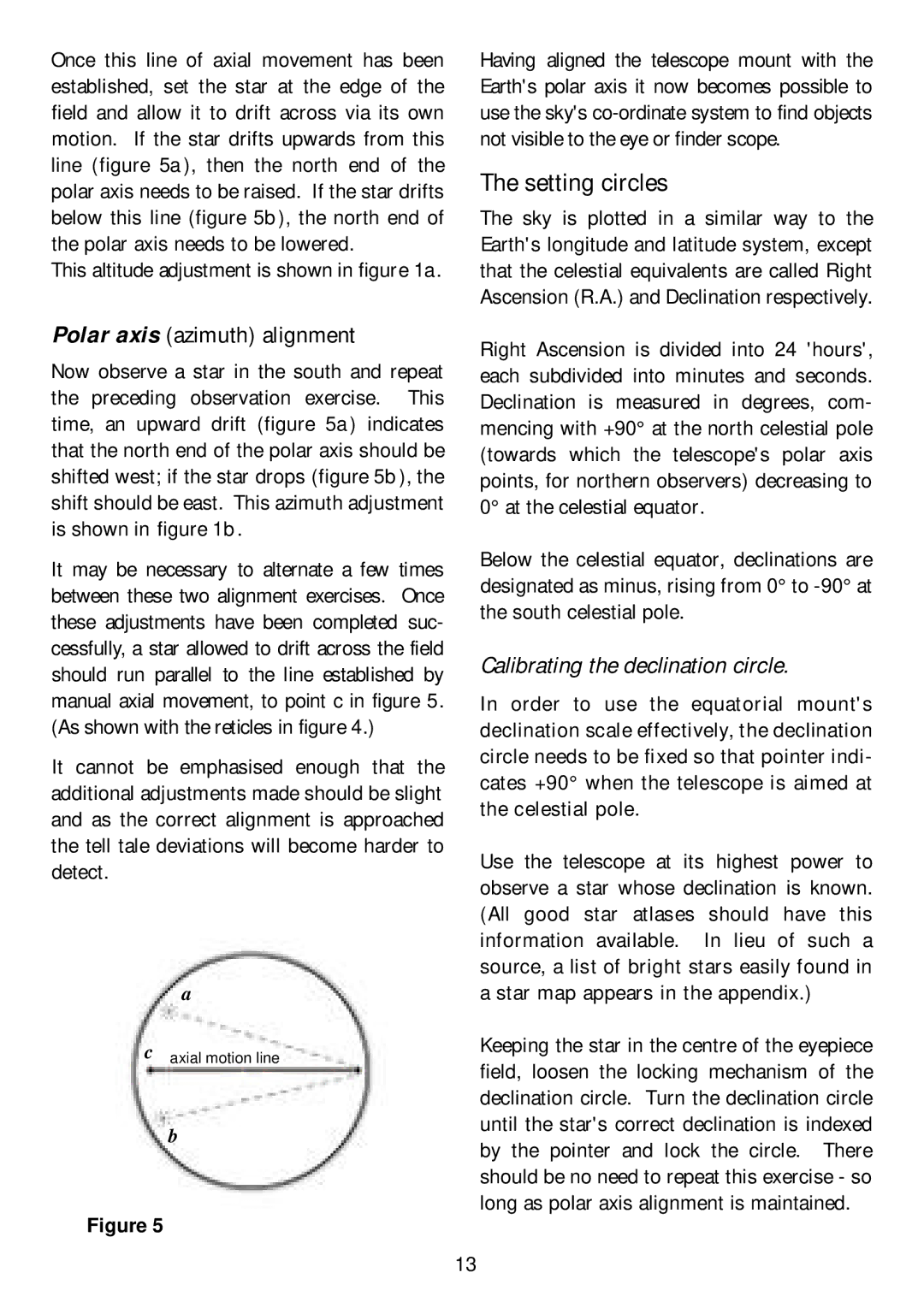
Once this line of axial movement has been established, set the star at the edge of the field and allow it to drift across via its own motion. If the star drifts upwards from this line (figure 5a ), then the north end of the polar axis needs to be raised. If the star drifts below this line (figure 5b ), the north end of the polar axis needs to be lowered.
This altitude adjustment is shown in figure 1a .
Polar axis (azimuth) alignment
Now observe a star in the south and repeat the preceding observation exercise. This time, an upward drift (figure 5a ) indicates that the north end of the polar axis should be shifted west; if the star drops (figure 5b ), the shift should be east. This azimuth adjustment is shown in figure 1b .
It may be necessary to alternate a few times between these two alignment exercises. Once these adjustments have been completed suc- cessfully, a star allowed to drift across the field should run parallel to the line established by manual axial movement, to point c in figure 5. (As shown with the reticles in figure 4.)
It cannot be emphasised enough that the additional adjustments made should be slight and as the correct alignment is approached the tell tale deviations will become harder to detect.
a
caxial motion line
b
Figure 5
Having aligned the telescope mount with the Earth's polar axis it now becomes possible to use the sky's
The setting circles
The sky is plotted in a similar way to the Earth's longitude and latitude system, except that the celestial equivalents are called Right Ascension (R.A.) and Declination respectively.
Right Ascension is divided into 24 'hours', each subdivided into minutes and seconds. Declination is measured in degrees, com- mencing with +90° at the north celestial pole (towards which the telescope's polar axis points, for northern observers) decreasing to 0° at the celestial equator.
Below the celestial equator, declinations are designated as minus, rising from 0° to
Calibrating the declination circle.
In order to use the equatorial mount's declination scale effectively, the declination circle needs to be fixed so that pointer indi- cates +90° when the telescope is aimed at the celestial pole.
Use the telescope at its highest power to observe a star whose declination is known. (All good star atlases should have this information available. In lieu of such a source, a list of bright stars easily found in a star map appears in the appendix.)
Keeping the star in the centre of the eyepiece field, loosen the locking mechanism of the declination circle. Turn the declination circle until the star's correct declination is indexed by the pointer and lock the circle. There should be no need to repeat this exercise - so long as polar axis alignment is maintained.
13
